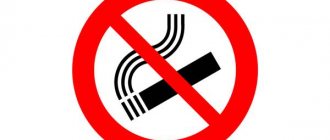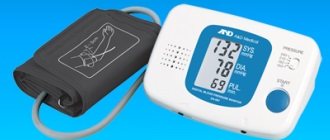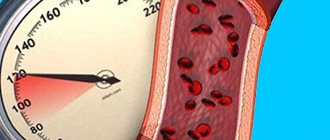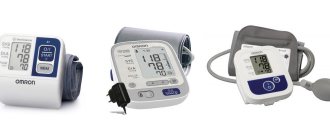Read in this article:
- What is blood pressure?
- What pressure is called upper and lower?
- What does syastolic blood pressure mean?
- What you need to know about diastolic pressure?
- Why does the lower pressure change?
- Pulse pressure: what is considered normal?
- How to measure blood pressure correctly?
- Why is it important to use a blood pressure monitor regularly?
Blood pressure is one of the objective indicators that allows us to assess the state of human health and the quality of work of internal organs. Thanks to modern tonometers, anyone can find out their blood pressure in a few minutes. However, you need not only to be able to use such devices, but also to understand what the numbers on the monitor mean.
What is blood pressure?
Tonometers record the blood pressure on the walls of the arteries, which is why it is called arterial pressure. In other words, the indicator means how much the level of fluid pressure in the circulatory system is higher than atmospheric pressure.
If we describe the whole process in simple words, it will look like this:
- The heart muscle contracts;
- The aortic valve closes;
- The heart receives highly oxygenated blood from the lungs;
- The following reduction occurs;
- Blood moves to all organs.
The entire circulatory system is involved in the formation of blood pressure, including the blood itself, which supplies tissues with oxygen, removes waste products, and provides thermoregulation. BP shows how well these functions are performed.
Determination of blood pressure: features and types
Blood pressure is the force of blood exerted on the inner walls of arteries (vessels that carry blood from the heart to other organs). Normally, blood pressure is in a changeable state, but the influence of certain factors can increase and decrease values in a negative direction:
- stress and emotional distress;
- alcohol consumption;
- physical exercise and other body stress;
- diet;
- obesity;
- metabolic disease;
- sedentary lifestyle;
- heredity;
- avitaminosis;
- weather dependence.
Negative changes in blood pressure provoke the development of:
- hypertension;
- stroke or heart attack;
- deterioration of blood supply to the brain;
- heart failure – cardiac dysfunction;
- peripheral vascular diseases.
Increases and decreases in blood pressure are called hypertension and hypotension, respectively.
There are two values of blood pressure:
- Systolic (upper numbers). Shows the force of the heart contracting and pushing blood out of the arteries.
- Diastolic (lower numbers). Notes the pressure in the vessels during rest of the heart muscles.
The value of the upper parameter depends on:
- size of the ventricle (the source of blood in the heart);
- speed of blood movement;
- pulsations of the heart muscles;
- width of the aorta (the largest artery).
Lower blood pressure is determined by the state of the system of small vessels: their flexibility and accessibility to blood flow. The higher the elasticity of the arteries and their resistance, the higher the readings on the tonometer.
What pressure is called upper and lower?
When the heart contracts, it creates a push for blood movement. This phase of the work of the heart muscle is called systole, and the indicator recorded at this moment is called upper or systolic pressure.
Before a new contraction, the heart relaxes as much as possible, the diastole phase begins, and at this moment the minimum pressure is recorded. It shows the degree of blood pressure on the vessels during the period between heart contractions.
What other ways
The symptoms accompanying this disease will help determine high/low blood pressure. Let's look at some of the most common ones.
Headache. With hypertension, the headache is concentrated in the occipital region and is pulsating in nature, and intensifies during movement or when tilting the head.
Pulse. A rapid pulse, which can be easily felt when pressed lightly, indicates increased blood pressure.
Skin. The complexion takes on a reddish tint with a visible capillary network.
Redness of the eyes also indicates the presence of high blood pressure.
Other symptoms of high blood pressure. Tinnitus, dizziness, floaters before the eyes, increased body temperature, increased sweating, nausea, shortness of breath.
With low blood pressure (hypotension), a weak thread-like pulse, pale skin, dizziness, and drowsiness are observed.
What does systolic blood pressure indicate?
Any deviations of indicators from the norm indicate malfunctions in the functioning of one or another body system. Both values or only one of them can increase or decrease. For example, an increase in systolic pressure occurs when:
- Overactive thyroid gland – thyrotoxicosis, when the thyroid gland secretes too many hormones;
- Severe anemia, when the type of blood circulation changes;
- Slowing of the pulse - bradycardia, ineffective operation of the aortic valve, when the upper pressure increases due to increased blood release;
- A decrease in the elasticity of the aorta, an increase in the density of its walls - most often the cause is atherosclerosis of a large vessel in old age.
An increase in only the upper pressure without changes in the lower is called systolic arterial hypertension. But such a deviation does not always indicate a disease. So, with significant sports loads, an increase in upper pressure is also observed, and this is not considered a deviation from the norm.
Blood pressure norms
The optimal value for healthy people is 100/65-139/89 mm. rt. Art., however, it happens that minor changes in values above or below these norms do not affect a person’s well-being. The younger the person, the lower the blood pressure values.
An increase in indicators from 140/90 or a decrease from 90/60 is already dangerous for health. Such a stable change in parameters indicates the development of hypertension or hypotension, treatment of which must be started promptly in order to avoid complications associated with deterioration of heart function. A single increase or decrease in pressure is provoked by the peculiarities of living conditions: stress, physical activity and air temperature can cause fluctuations in indicators.
What you need to know about diastolic pressure?
The diastolic pressure indicator characterizes the degree of resistance of blood vessels and their permeability to blood. The health of the vascular system is determined by two main factors: the elasticity of their walls and the functioning of the kidneys. The human body contains a large amount of fluid; without its circulation, metabolism is impossible, and blood plays a crucial role in this process. It passes through the kidneys, which act as a kind of filter, regulate water-salt balance and remove toxins from the blood along with urine.
With this mechanism, an increase in diastolic pressure is usually associated with a violation of the removal of fluid from the body, an increase in its volume and an increasing load on the walls of blood vessels. If lower blood pressure exceeds normal levels for a long time, the risk of heart attacks and strokes increases. If it decreases for a long time, problems arise with the supply of oxygen to tissues and organs. Because of this, dizziness and fainting occur, especially during physical activity.
The causes of low diastolic pressure may be bleeding, prolonged hunger and dehydration, allergies with anaphylactic shock. The indicator decreases with insufficient production of the hormone renin, which regulates vascular tone. The decrease also occurs due to stress, fatigue and tuberculosis.
What is “mm Hg. Art.?
Very often, people who need to measure blood pressure do not understand what the units of blood pressure measurement mean. Because of this, they cannot control their condition on their own and spend time and money on consultation and help from specialists. In reality, there is nothing complicated here, the mysterious “mm Hg. Art." stands for millimeters of mercury.
How is blood pressure measured? The equipment used to measure indicators today has been in use for about 30 years. It is interesting that the measure for determining blood pressure was invented not only in honor of previously used mercury columns, but also in honor of the Italian who developed the device that is currently relevant and used in medical practice.
How else is blood pressure measured? In France, all measurements are still carried out using real mercury columns. True, the meanings are completely different from those to which we are accustomed. There are also two values, but they are radically different from those shown by modern instruments. In this case, both indicators simply need to be multiplied by 10, then we will get the numbers we are familiar with.
Why does the lower pressure change?
An increase in lower pressure may be associated with:
- Narrowing of the lumen in the renal arteries, their increased tone;
- Kidney diseases;
- Significant excess weight;
- Myocardial dysfunction;
- Diabetes mellitus;
- Changes in the concentration of hormones in the blood.
When diastolic pressure deviates from the norm, a person feels a loss of strength, chills in the lower extremities, and drowsiness. A nagging headache appears, sweating increases, concentration decreases and memory deteriorates. Possible discomfort in the heart area, arrhythmia. This is why it is important to measure your blood pressure regularly so that if there are any abnormalities, you can immediately consult a doctor.
Interesting historical facts
People have been trying to measure blood pressure since ancient times, before the creation of mercury columns. One of the scientists, Stefan Hales, in the 18th century, decided to establish as an experiment how blood pulsates in a horse’s artery. To do this, he pressed the site of the artery with a rope and attached a glass test tube to it through a metal tube. As a result, the blood showed pulse fluctuations. In this way it was possible to determine the animal's pulse.
The French scientist also conducted his first experiments with animals. In 1928, he used the device for the first time using a mercury column.
And in 1955, they found a way to measure pressure without penetrating the vessel, but by determining the force that is necessary to stop blood circulation. This was made possible with the help of a sphygmograph.
Pressure is measured in the following units - millimeters of mercury. The value consists of two numbers: systolic and diastolic. For a person to feel good, both indicators must be normal. Blood pressure changes with age and also depends on a number of factors. In addition, each person has a “working pressure”, which may not coincide with the norm. It is important to know it and constantly adjust it. At the first signs of hypertension, you should consult your doctor.
Pulse pressure: what is considered normal?
Systolic pressure is considered normal in the range of 110-130 units, but with age this figure increases to 140 units. For diastolic pressure, the norm is 65-80 units; with good vascular elasticity, the indicator will be closer to the upper limit of the norm.
The difference between upper and lower pressure is also important. It is called pulse pressure and is normally 40 units; 120/80 is considered ideal. An increase in the gap to 65 units indicates a serious risk of developing heart and vascular diseases. In such a situation, malfunctions of the heart muscle provoke rapid wear and tear of the walls of arteries and veins, which accelerates the aging process.
In old age, the difference between syastolic pressure and diastolic pressure of 50 units indicates precisely that natural wear and tear occurs in the body, the walls of blood vessels have become less elastic.
A pulse pressure value of 60 units indicates a risk of heart disease and the need to urgently visit a doctor. If the tonometer shows a difference of about 20 units, most likely the blood pressure was measured incorrectly. With such a gap, the person’s health condition is critical.
What do the numbers determined by the tonometer mean?
When the patient has decided what the units of blood pressure measurement mean, the next important question arises: what do the numbers on the tonometer mean and how are they deciphered. On the device, regardless of whether it is electronic or mechanical, the patient can see two numbers.
The first digit (systolic) is always greater. It shows how hard the heart works. This figure also reflects the oxygen saturation of organs. The second value (diastolic) is formed in a relaxed state. It shows how capillaries affect blood flow at rest. The functioning of the urinary system also depends on this value.
Both numbers in combination affect the full movement of blood through the vessels. Therefore, each of the indicators is important in its own way for the quality of the cardiovascular system. To avoid any violations, you need to constantly monitor the values by measuring the pressure with a tonometer. If the numbers are within acceptable limits, there will be no problem.
The established pressure standards are as follows: systolic - 120, diastolic - 70. With small runs, if a person does not experience discomfort, pathology is not recorded. The norm is different at each age, however, on average, in a young age, blood pressure should not exceed 140 over 90. Blood pressure is considered low if it is less than 100 over 65.
Important! Low blood pressure is commonly called hypotension. High levels are diagnosed as “hypertension.” There is also the concept of “hypertensive crisis”. In this condition, a person’s blood pressure may rise sharply and the condition may worsen.
Hypertension can be grade 1, 2 or 3 depending on the values on the tonometer and the patient’s well-being. The first is practically not dangerous and is quickly cured. It is important to identify hypertension at an early stage and begin treatment. More advanced forms take years to treat.
How to measure blood pressure correctly?
To obtain reliable blood pressure readings, you need to take measurements in a quiet environment at room temperature. For about an hour, it is not advisable to smoke or drink strong coffee or tea. For half an hour you need to eliminate physical activity. Your feet should be on the floor and your hands should rest freely at heart level.
There are a few more simple rules:
- During the measurement, you cannot move, talk or cross your legs;
- The cuff should fit snugly on the arm, but not squeeze it;
- If several measurements are required, at least 5 minutes must elapse between them;
- The cuff is selected so that it covers at least 80% of the shoulder circumference. If you have to hold the Velcro with your hand, the results will be incorrect;
- In the absence of back support, the indicators may be overestimated.
Doctors often refer to the so-called “working pressure”. The fact is that, depending on the state of the body and its individual characteristics, the interval of the upper and lower indicators may differ for different people. Working blood pressure is the blood pressure at which a person remains in good health. This could be, for example, 130/90 or 115/80.
There is only one way to determine your working pressure: measure it regularly. Then you can find out what values the tonometer shows when a person feels well. This is an important nuance, since with a reduced operating pressure the same 130/90 can be considered as a significant increase, although the numbers themselves are within the norm.
Pressure measurement algorithm
The procedure for measuring pressure with a mechanical tonometer is as follows.
- Having prepared, you need to put the cuff of the device on your arm, raise it a few centimeters above the bend of your elbow so that it is at the same level as your heart.
- The stethoscope should be placed on the inner bend of the arm - it is in this area that you can best monitor the pulse.
- The air in the cuff needs to be pumped up to a level of 200-220 millimeters of mercury.
- Gradually - from two to four millimeters per second - you need to deflate the air.
- The first beat that the stethoscope picks up indicates the level of systolic, upper blood pressure.
- When the knocking stops, the arrow on the pressure gauge of the device will reflect the value of diastolic, lower pressure.
- After taking several measurements at intervals of 3-5 minutes, you will need to calculate the average blood pressure reading - this will be the pressure value.
If the user uses an automatic or semi-automatic device, there is no need to listen to heart sounds. Such a tonometer will display the measured pressure on an electronic display.
How is blood pressure measured?
Caffeinated drinks may distort measurement results.
To be sure to distinguish a hypertensive attack from hypotension, you should trust a special device - a tonometer, which will show accurate numbers. But in order to obtain the most accurate data during measurements, it is important to properly prepare for the procedure. On the day of measurements, it is contraindicated to drink caffeinated drinks, alcohol, or smoke cigarettes. Before the examination, the patient is recommended to rest for 15-20 minutes, calm down, and even out his breathing.
Measurements are taken in a sitting position, with the arm bent at the elbow and relaxed. After securing the cuff, air is injected using a bulb, then it must be slowly deflated, carefully listening through the stethoscope to the first and last heartbeats. Blood pressure is measured on both arms, with the larger value taken into account. If the doctor suspects the development of chronic hypertension or hypotension, he will recommend taking daily measurements by the hour. Afterwards, the dynamics of the indicators is studied, which will be the basis for making an accurate diagnosis.










